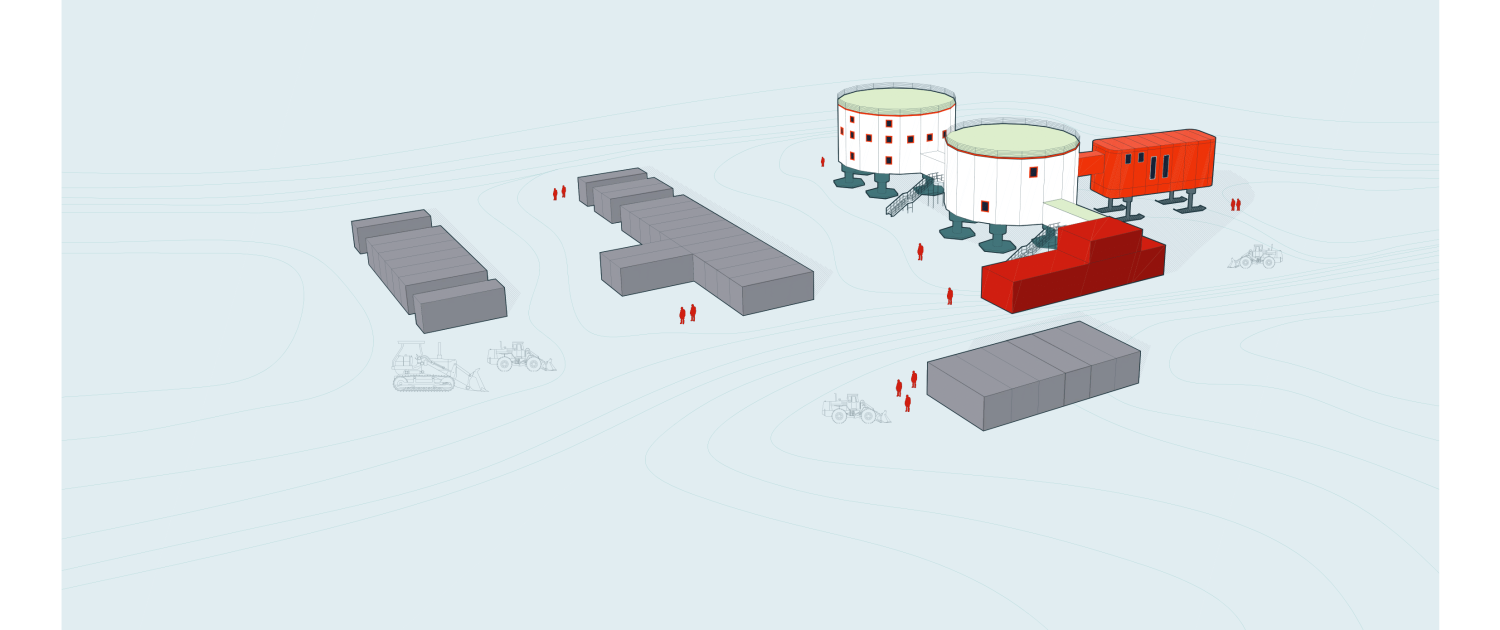GreenPatch: Architecture in sensory-deprived environments
After the space race, several ambitious concepts regarding habitability in isolated and confined environments started to emerge. Various images showing a life similar to the one we know on Earth were idealized as concepts for future space missions. In reality, most of the projects were constrained by efficiency, cost, and logistics and were reduced to the bare minimum. Antarctica shares enough similarities with life in outer space to be often nicknamed “White Mars”. Researchers are confined to the station for most of the year, having only a small window of about 3 months when fresh supplies can be delivered and emergency flights can take place. The winter months also pose a significant psychological risk and impact the group dynamic as well as each individual. The lack of seasons, familiar day-and-night light cycles, and stimuli lead ultimately to boredom and decreased cognitive and motor skills. Even though these side effects are well known, an Antarctic station still needs to embrace a more sensory-rich design. The aim of the master thesis is to highlight the problems encountered during long stays on the Antarctic Plateau and to propose a sensory-enriched add-on for these stations. The research interviews for this thesis have pointed out that greenhouses and additional space for group activities are much needed during the long winter months. The architectural project strives to incorporate these two uses with regard to the different technical requirements. It will emphasize on the interaction between the crew members and how an exploration greenhouse can be spatially improved. The design proposal consists of an add-on to the already existing Concordia Research Station situated on the Antarctic Plateau. GreenPatch is meant to be able to be integrated also on other stations in Antarctica. Concordia has been chosen as a case study for its ongoing studies on human habitability in extreme environments performed by the European Space Agency and unique isolation and confinement conditions. GreenPatch provides 20m2 of greenhouse growth area and a service and monitoring area of 9m2. Around these rooms is an additional work/lounge area and a sports area. The technical and equipment storage rooms are on the lower level, beneath the actual greenhouse. The two-story-high module provides enough room height for a climbing wall and hanging mats. By dividing the greenhouse into two levels, a 6m high climbing wall resulted, which leads to hanging mats from where the greenhouse and its plants are perfectly visible. While there is a pretty strict work and leisure program on Antarctic stations, with fixed meal times, GreenPatch will provide work space and also leisure space after the working hours. During the day, when the greenhouse light is the least bearable, only the lounge and monitoring areas will be occupied for the working crew. After dinner, when the crew has free time, GreenPatch offers the climbing walls for group sport, hammocks for smaller groups and the lounge area for personal quiet time.
Project Year
2021
Team Members
Author: Irina Panturu, Vienna University of Technology, A01 Architects,
Vienna Tutors: Sandra Häuplik-Meusburger, Senior Lecturer HB2 Institute, Vienna University of Technology space-craft Architecture
Credits
Credits: Irina Panturu, Vienna University of Technology, A01 Architects, Vienna Project in the course of a Diploma (Master Thesis), Vienna University of Technology, 2021


